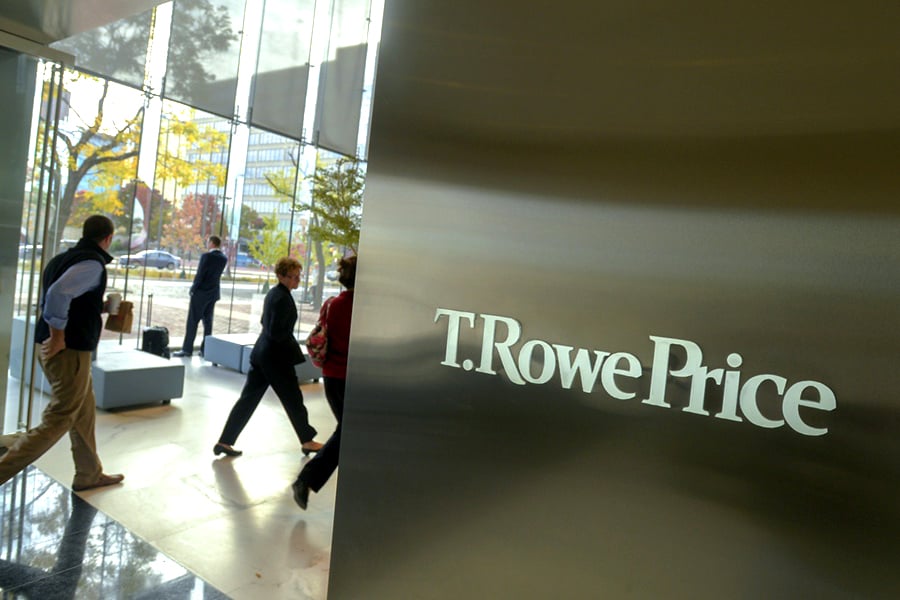

T. Rowe Price is making several changes to its lines of target-date series, including an increase in equity allocations that will make its products among the most aggressive on the market.
The company plans to adjust the allocations in the glide paths used by its two target-date suites over the course of two years, it announced Thursday. The most dramatic of those changes is a move to a 98% allocation to equities — up from the current level of 90% — for the youngest target-date investors. The changes affect the mutual fund and collective investment trust versions of both the Retire Funds and Target Funds.
The company is also changing fees within the mutual fund versions, resulting in lower costs for some investors.
Glide path changes
T. Rowe will implement the glide path changes gradually, beginning in April, which means the 2060 fund will see several adjustments before it reaches 98% in equities, it said.
The company is also ramping up equity allocations for some investors who are retired, though such changes will not affect investors who are currently in the oldest fund vintages, said Wyatt Lee, portfolio manager and the firm’s head of target-date strategies. T. Rowe opted to make the changes gradually because of liquidity constraints, trading costs and the current position in the market cycle, Mr. Lee said.
“That struck a nice balance for us in capturing the potential upside over the short term — but if we see some market volatility, not being too hurt by it,” he said. “Those investors in the longest-dated funds will have advantages over time.”
Because investors in retirement are the most sensitive to market risk, the oldest vintages of funds will not see any changes in their equity allocations.
T. Rowe’s Retirement series will retain its equity allocation of 55% at retirement, though it is increasing the allocation in funds through 30 years after the target date, moving it from the current level of 20% to a new allocation of 30%. The Target series will also retain its at-retirement equity allocation of 42.5%, though like the other series, it is increasing the post-retirement stock allocation from 20% to 30%.
According to a Callan composite of glide paths from 64 different target-date suites, the average equity allocation for funds 40 years from their target dates is 87%. For funds at the target date, the average is 39%, and it is 29% for funds that are 20 years past their target dates.
T. Rowe spent two years researching potential changes to its target-date suites, including surveys of retirement plan sponsors, consultants and advisers, Mr. Lee said.
There have been questions both within the company and externally about the timing and whether bumping up stock allocations in an aging bull market is optimal, he said. But market risk should be balanced with longevity risk, and the latter is of much more concern to plan sponsors, he said.
“Risk is all about the context,” Mr. Lee said. “Plan sponsors are consistently prioritizing solving the retirement income problem and longevity much more than focusing on downside risk.”
The last time T. Rowe made changes to its glide path was 2017, and those adjustments affected the fixed-income allocation, said Bobby Blue, a manager research analyst at Morningstar.
“The glide path changes reflect their belief that the biggest risk investors face is outliving their assets, so they believe strongly in harvesting additional equity risk premium both before and after retirement,” Mr. Blue said in an email. “The additional equity exposure – while not explicitly designed to do so – also serves to tilt towards T. Rowe’s strength, which is equity investing.”
New underlying investments
The company is also adding its Emerging Markets Discovery Stock fund as an underlying investment within both target-date series, and it is adding exposure to its U.S. Large Cap Core fund primarily to the actively managed Retirement series, according to the announcement.
Those funds “appear to have been thoughtfully selected, though we’re still evaluating the impact on the series exposure,” Mr. Blue said. “There’s a concern when adding additional funds where you already have exposure that you may dilute some of the benefits of active management, and the series now has three large-cap offerings across value, blend, and growth funds.”
At the end of December, T. Rowe Price was the third-largest U.S. target-date mutual fund manager by assets, at $162.3 billion, behind Vanguard and Fidelity Investments.
Across both mutual funds and CITs, the company managed $292.4 billion in target-date products at the end of 2019, according to T. Rowe’s annual report.

Executives from LPL Financial, Cresset Partners hired for key roles.

Geopolitical tension has been managed well by the markets.

December cut is still a possiblity.

Canada, China among nations to react to president-elect's comments.

For several years, Leech allegedly favored some clients in trade allocations, at the cost of others, amounting to $600 million, according to the Department of Justice.
Streamline your outreach with Aidentified's AI-driven solutions
This season’s market volatility: Positioning for rate relief, income growth and the AI rebound
